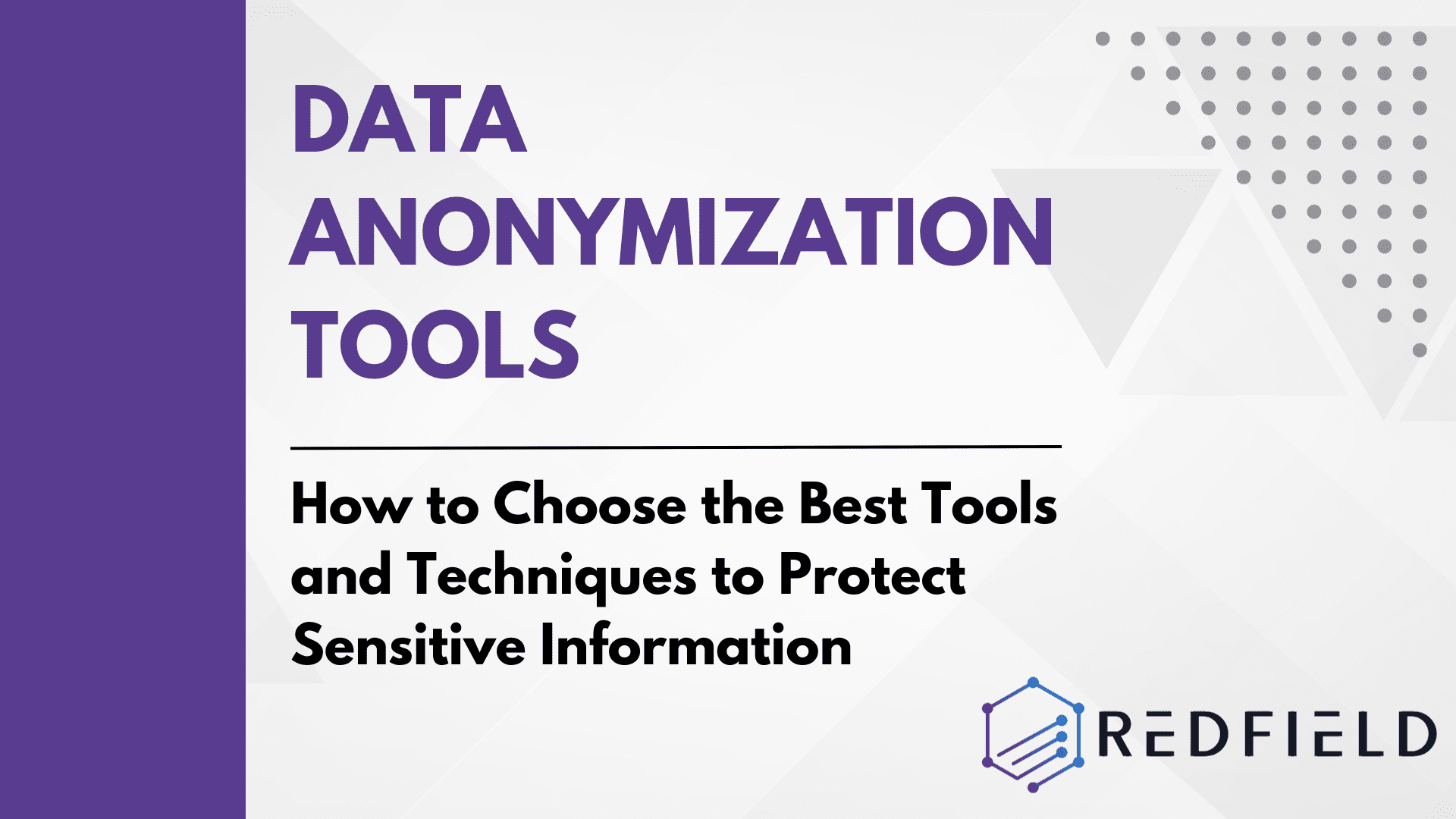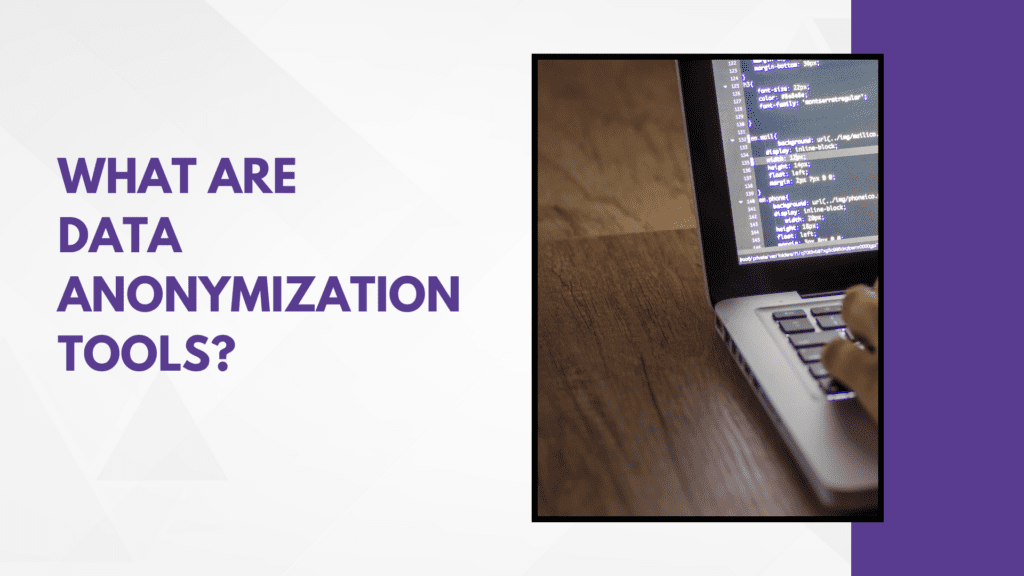
Data is an unorganized and raw collection of facts that contains the most valuable information for any organization. The generated, captured, copied, or consumed data is sensitive, especially the data that holds personal information, including medical records, bank details, IP address, and much more, and is at high risk of getting hacked. To secure the miscarriage of data from hackers, data anonymization tools ensure that classified data is irreversibly altered and protect the privacy of data subjects.
In the modern world, progressive businesses are focused on collecting and analyzing data with the ultimate goal to make better decisions and improve decision outcomes. With data analysis, companies create their macro and micro strategies, strategic and operational decisions, generate synthetic data, and create statistical models such as real-time analysis for data utility and innovative solutions and opportunities for business expansion.
With data anonymization techniques, companies leverage the power of personal and sensitive data for speedy, meticulous, accurate, and more relevant decisions in complex and fast-changing business contexts while preserving the privacy of each individual. Scaling business require a mix of data science solutions and more advanced techniques that will enable organizations to respond swiftly to changing requirements and constraints.
Table of Contents
What Is Data Anonymization?
Our data is being collected, stored, and used all the time. What we do, where we live and work, how we entertain ourselves, where we shop and what we buy, how much money we spend on different products, which medical practitioners we visit, what medications we take, where we go on vacation, which car we drive and what car we want to purchase – the list is endless. In just a few scrolls on social media, when harassed by ads, we become aware that companies are selling our information to the highest bidder only because we searched for a particular product or service.
Thanks to data privacy legislation controlled by Europe’s GDPR and California’s CPRA, we – the consumers- have been given a voice and the right to our data records to be anonymous. In other words, when an organization does use our data (as companies worldwide inevitably will), it can never be traced back to us. This is the essence of data anonymization.
Data anonymization is a process of protecting private or sensitive information (Personally Identifiable Information (PII)) from a dataset by erasing or encrypting the identifiers that associate an individual with stored data or with artificial intelligence datasets.
The anonymization process makes it difficult or even impossible to recognize or re-identify individuals or business entities from their data while keeping the information utilitarian for software development, analysis, research, or other legitimate purposes. Anonymized data is a type of information in which data or statistical anonymization methods or tools encrypt or remove the PII and thus reduce the risk of unintended disclosure while preserving the original data or subject’s privacy while transferring information across boundaries.
Types of Data Anonymization
The six basic types of data anonymization include data masking, pseudonymization, adding random noise, data generation, synthetic data, generalization, and data swapping of any PII, such as names, addresses, phone numbers, passport details, credit card numbers, or Social Security Numbers. The PIIs are replaced or removed with different cryptographic techniques, replacing data with meaningless characters, digits, or symbols and adding or injecting random data, noise, and pseudonyms, which protects the data from breaches.
It is essential to highlight that although data anonymization ensures that data is privacy-protected and data anonymization tools guard the privacy of a dataset’s subjects, these different statistical anonymization methods cannot guarantee complete anonymity, considering the threat of re-identification, especially in cases when the anonymized data is combined with publicly available sources. Even when the data is clear of identifiers, attackers can use de-anonymization methods to retrace the data anonymization process, which is why data teams must carefully consider the risks and limitations and consider other risk models and estimation methods, support statistical analyses, and different anonymization methods.
Choosing the best data anonymization tool depends entirely on the complexity of production data, the project, and the programming language used. For instance, a student conducting a survey for education purposes will have different requirements than a data scientist analyzing large datasets of banking data regarding customer transactions across multiple systems in the given period.

What Are Data Anonymization Tools?
Data anonymization tools enable companies that are data stakeholders to change or remove delicate information contained in highly reliable data sets. By doing so, data anonymization tools remove the PII contained in a given data set with false identifiers and make it improbable to determine the individual to whom the data belongs. The ultimate goal of data de-identification is to lower the risk of unintended data disclosure and reduce legal and regulatory liability.
Any company that collects, stores, handles, or transfers sensitive or personal data typically uses some data anonymization technique. Depending on the business, the type of data in question, and how (or if) the actual data itself needs to be shared, users configure the data anonymization tool to deliver varying levels of anonymization.
Generally speaking, some elements of the anonymized data remain intact to facilitate analysis and ensure practical data usage. Notwithstanding, advanced data anonymization tools consistently obfuscate direct private identifiers, including names, addresses, telephone numbers, and Social Security Numbers, alongside indirect identifiers, safe microdata files such as salary, place of employment, or diagnosis. The replacement process removes any detail from the original data and unstructured data that might be linked and helps hackers identify a specific individual based on the data or use the unstructured data for illegal actions.
Data anonymization tools are mandated by various regulations, including the European Union’s General Data Protection Regulation (GDPR), which requires anonymizing personal data stored about EU citizens, and HIPAA, which requires anonymizing data from medical records in certain instances. The anonymized data is no longer subject to regulatory limitations, enabling organizations to analyze data and leverage the information for decision-making without the risk of regulatory repercussions.
Why Do Businesses Need Data Anonymization Tools?
The increasingly privacy-sensitive business and legislative climate compels companies to take risk estimation methods to protect users’ privacy and avoid regulatory penalties.
Industries such as healthcare and finance are under constant attack by hackers and need the best data anonymization tools. In 2022, the number of individuals affected by breaches of sensitive data reached 422 million individuals in 1802 attacks, up from 294 million in 2021 (across total breaches and PII exposures). Notably, over half of those victims were compromised by breaches at one company: Twitter makes the top 10 list twice. The top data breach attributes were: name, full Social Security Number, birth date, home address, and medical history.
Correspondingly, the Ponemon Institute revealed that the average data breach cost is expected to reach around $5 million in 2023, which is a hike compared to $ 4.35 million in 2022 and $4.24 million in 2021. The fines reached $1.2 billion for Didi Global by the Chinese Government, followed by Amazon fined €746 million by Luxembourg regulators, and Facebook with $725 million by FTC.
Considering the frequency and severity of breaches on the rise, organizations must prioritize data security and adopt the best data anonymization tools to prevent the disclosure of sensitive information and avoid hefty fines and penalties.
Check the video and learn more about Anonymization and Pseudonymization under GDPR:
Data Anonymization Best Practices
The best approach to protecting sensitive personal data is adding multiple layers of defense to the anonymization scheme, particularly in big data analytics cases where one layer of an automated anonymization engine might not be effective enough in masking data. Implementing layers of protection to block de-anonymization attacks by following security measures substantially increases the safety of delicate information contained in data.
- Database activity monitoring provides real-time alerts of violations in data warehousing, big data sets, relational databases, dataset attribute values, and data storage.
- Database firewall effectively blocks SQL injections by evaluating vulnerabilities.
- Data discovery controls where data resides, and with data classification, the data quantity and context are identified, both on-premises and in the cloud.
- Data loss prevention software is a robust solution that inspects sensitive information while in use, in motion, and at rest, thus detecting potential data breaches.
- Data masking methods render sensitive data and make the information useless in breaches.
- Analysis of user behavior through machine learning effectively establishes a baseline for data access and detects abnormal activity.
Data Anonymization Tools Use Cases
Some of the common use cases of data anonymization include:
Marketing
Increasing in number, companies are moving their businesses online, and as online retailers, they need to examine consumer data and analyze customer behavior thoroughly. The data collected and used for communication via website, email, social media, and advertising is subject to privacy regulations. In order to protect the individuals and remain compliant, marketers need to use data anonymization tools to harvest relevant insights.
Medical Research
Medical researchers and healthcare professionals examine data for various research purposes, such as clinical trial data sharing, drug discovery in the field of medicine, the prevalence of certain diseases among a specific population, and much more. Companies employ data anonymization tools to ensure that data used in research is constantly compliant with HIPAA standards and that patient privacy is protected.
Software and Product Development
Developers need accurate data created by individuals in real-time, with output data rather than synthetic output data or artificial datasets, to test new software solutions. The data used for software and product development is subject to privacy regulations. With data anonymization tools, companies ensure the software’s functionality without jeopardizing customer data confidentiality or the sensitive personal data utilized in the process in case of a breach.
Business Performance
Organizations collect employee-related data to analyze performance, take risk thresholds, optimize productivity, and ensure employment safety. With the employment of data anonymization tools, companies can analyze valuable data, use various risk estimation methods, and protect employee privacy and the security of their personal data.
Why Redfield?
Redfield is your partner in data sharing and anonymization.
Anonymization implemented at a proper level ensures that sensitive and personal data is stored safely, can be used for internal goals, exported to third parties, processed without consent, and used for various business purposes while protected from breaches and complies with all norms.
The wide range of techniques empowers companies to protect data while choosing a method that balances the degree of risk involved in the identification chain of re-identification production data and the purposes for which the client’s critical production level data, environment, or data is being used. Our team of experts works on creating made-to-measure solutions adapted to client’s individual needs.
With Redfield, data anonymization is performed in a manner that ensures that companies get more value from their data while improving stakeholders’ trust. Regardless of the industry, the organization’s capacity to anonymize data on your own, or market regulations and jurisdictions, we provide customized solutions to protect your information in a practical and scalable way.
FAQs
What Is Data Anonymization?
Data anonymization is a process of protecting private or sensitive information (Personally Identifiable Information (PII)) from a dataset by erasing or encrypting the identifiers that associate an individual with stored data or with artificial intelligence datasets.
What Are Data Anonymization Tools?
Data anonymization tools enable companies that are data stakeholders to change or remove delicate information contained in highly reliable data sets. By doing so, data anonymization tools remove the PII contained in a given data set with false identifiers and make it improbable to determine the individual to whom the data belongs.
Why Do Businesses Need Data Anonymization Tools?
The increasingly privacy-sensitive business and legislative climate compels companies to take risk estimation methods to protect users’ privacy and avoid regulatory penalties, with the ultimate goal of data de-identification to lower the risk of unintended data disclosure and reduce legal and regulatory liability.
